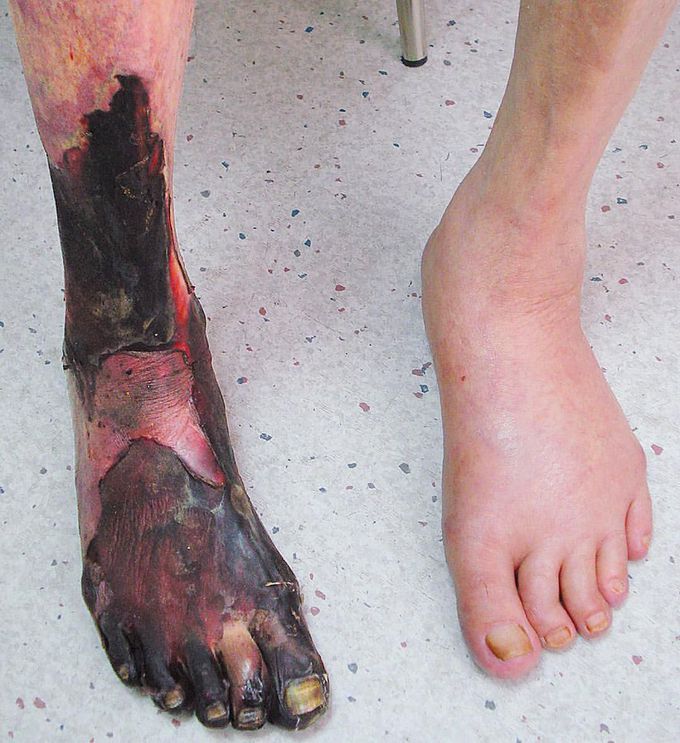


Ischemic dry gangrene!
This is a 88-year-old man who reported he did not smoke and who had a long-standing history of diabetes mellitus, hypertension, and hypercholesterolemia was admitted to the hospital with a 4-month history of painful and progressive ischemic gangrene of the right lower leg. The ankle–brachial index was 0.2 in the right leg and 0.8 in the left leg. The history and physical examination were otherwise unremarkable, with no evidence of a vasculitic, hypercoagulable, or embolic disorder. The patient received a diagnosis of ischemic dry gangrene, most likely secondary to severe atherosclerotic peripheral arterial disease. He declined to undergo further investigation or surgical management, citing the expense and the possibility of complications. The patient instead elected conservative treatment with analgesia, an antiplatelet agent, and management of his vascular risk factors. Credit to NEJM
Best case scenario, how long can he expect to live without further complications?
Hemodynamic stimuli&nonhemodynamic stimuliEffects of sugar on teeth

